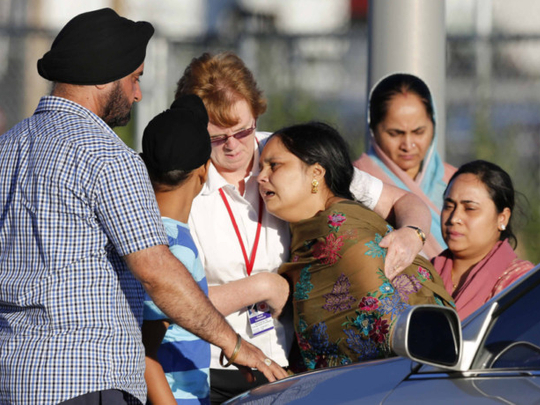
A little-known fact: the first victim of retaliatory violence following the 9/11 attacks was a Sikh man. On September 15, 2001, 52-year-old Balbir Singh Sodhi, a gas-station owner in Arizona, was shot five times by Frank Roque. While Sodhi died instantly, Roque went on to shoot at other ethnic minorities before going to a local bar and boasting: “They’re investigating the murder of a turban-head down the street.”
Yesterday, a gunman opened fire on a Sikh congregation in Wisconsin, killing six people in what is now being treated as an act of “domestic terrorism”. Some witnesses say the shooter had a tattoo marking the September 11 attacks, though this is not confirmed by the authorities.
While the “war on terror” that followed September 2001 badly affected Muslim families in the west, it is sadly less well-known that Sikhs have also faced significant harassment as a consequence. The Sikh Coalition of Washington said yesterday that Sikhs in the US have faced more than 700 such incidents since 9/11; authorities still do not officially collect data on religious hate crimes against them.
More closer to home, my own brother — an observant Sikh with a turban and beard — faced frequent low-level harassment with people shouting “Taliban” at him or worse.
Part of the reason why Sikhs have struggled to get heard on this issue, especially in the UK, is because their messages have not always been universally welcomed. When a group of Sikhs from around the UK organised a vigil outside the US embassy in London to reiterate that “Sikhs were not Muslims”, many distanced themselves from the implication that hate crimes against Muslims were OK.
In many cases faith groups did spring up (among Sikhs, Hindus and Muslims) to assert a more distinct religious identity and distance themselves from the “Asian” umbrella. But that also put them at odds with older anti-racism groups that were based around a more inclusive, secular identity.
Media ignorance
The media ignorance of Sikh issues and the religion itself hasn’t helped either. Yesterday, US cable television itself displayed some staggering examples of ignorance.
In Britain, too, there is anger online that the media has largely airbrushed away the bigotry and violence Sikhs have suffered since 9/11 and 7/7. Discussions on the BBC Asian Network radio station has expressed similar sentiments. But by and large, Sikhs have quietly soldiered on in the hope that the harassment would eventually go away.
The religion was officially founded by Guru Nanak Devi Ji in Punjab, India, around the late 1400s. He was the first of 10 living Gurus (teachers) who would build, rally and form a Sikh community that now numbers approximately 30 million across the world. The tenth Guru — Govind Dev Ji — commanded Sikhs to carry a more distinctive identity in the form of five Ks (translated to: a steel bangle, keeping long hair, a comb, cotton underwear and a sword); each of the five Ks is symbolic.
It’s even more difficult to summarise the religious philosophy, though it is a misconception that Sikhism is very similar to Hinduism: the former officially rejects the caste system, praying to idols and is very much monotheistic. Sikhs regard the scriptures — called the Sri Guru Granth Sahib (SGGS) — as the 11th and eternal teacher for the Sikhs. It is also a more inclusive and less ritualistic religion — the Gurus invited Hindu and Muslim preachers to contribute to the SGGS with the view that knowledge and understanding is universal and not dependent on one path of life.
While the background details of the domestic terrorist have not yet been released, I hope the incident will at least shine greater light on how such awful bigotry and ignorance continues to affect so many people.
— Guardian News & Media 2012
Sunny Hundal is editor of the leftwing blog Liberal Conspiracy and other online magazines. He writes about the left and identity politics









